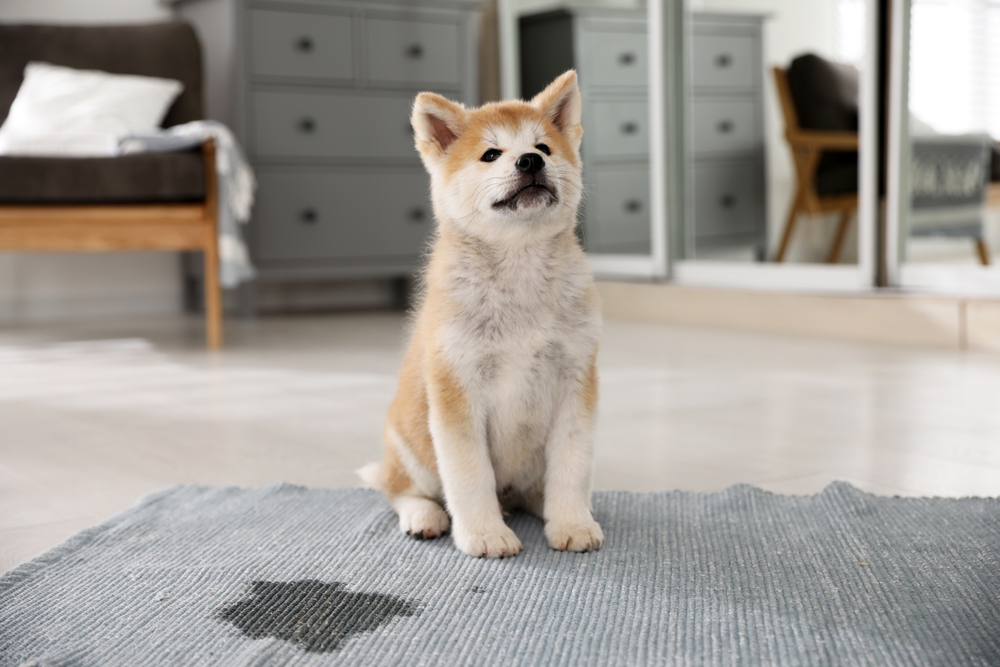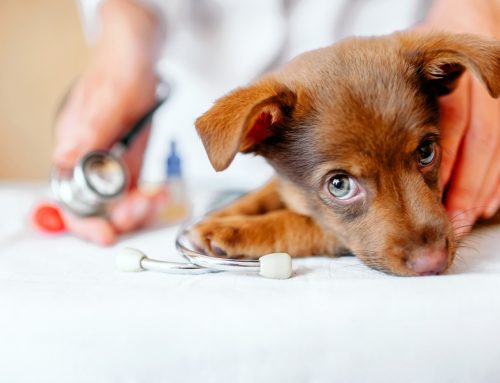If you’ve recently welcomed home a new puppy, or are preparing for one, you’ll want to start them off on the right paw. Puppies thrive with a safe puppy-proof space, predictable access to resources (e.g., elimination locations, food, water, and toys), and positive social interactions. Check out this basic guide to preventing four common puppy behavior problems from the Animal Clinic of Council Bluffs.
#1: Crate training and puppies
Crate training your puppy can drastically reduce house training time, help them feel safe and secure, and reduce the likelihood of separation anxiety. Place the crate in a central location, and ensure your puppy learns that their crate is a positive and relaxing space by always providing treats or toys to engage them in the crate when they’re not asleep. Never use the crate as a punishment, or to isolate or deprive your puppy. Always lure them into their crate with a reward, or remain completely neutral.
For a Fear Free guide to crate training, click here.
#2: Jumping and puppies
Although a young jumping puppy may seem innocent, boisterous adolescent puppies or adults can harm children, knock elderly adults off balance, and steal items from the counter or table. Teach your puppy proper greetings right away, and get a jump on jumping behavior.
- Greet the puppy calmly — Ask visitors to ignore your puppy until their “four feet are on the floor.” Avoid using a high-pitched voice, which is more likely to excite the puppy.
- Reinforce good behavior — When the puppy is sitting, lying down, or standing with all four feet on the floor, reward them by kneeling down to their level and petting them, or dropping treats on the ground.
- Ignore jumping — If your puppy puts their paws on you or a visitor, stop all interactions with the puppy or turn away.
- Ask for a different behavior — Ask your puppy to “Sit” or “Down,” before you give them attention or a treat. Some puppies can be taught to fetch a toy as an alternative to greeting behavior.
- Treat scatter — In a pinch, or to prevent bad behavior during training and guests arrive, scatter treats on the floor. This will encourage the puppy to look down and will preoccupy them until everyone is settled.
#3: Inappropriate chewing and puppies
Puppies chew to explore their world and find relief from gum pain during teething. While most chewing behavior subsides as the puppy enters adulthood, inappropriate or destructive behavior is self-reinforcing, and harder to correct. Ensure your puppy is confined to a limited area (e.g., crate, play pen, or puppy-proof room) to eliminate inappropriate chewing opportunities. Then, provide plenty of puppy-friendly chewing options of various textures and sizes. Always supervise play, to ensure your puppy isn’t destroying or consuming the toy.
Safe toy options for puppies include:
- Rubber toys — Kong, WestPaw, and ChewKing toys offer pliable rubber or rubber-like material that is flexible and safe for sharp puppy teeth.
- Teething toys — Puppy toys labeled for teething are often made from plastic, are freezable for maximum comfort, and may include a nubby design for a massage-like effect on the gums.
- Puppy chews — Digestible chews made for puppies can satisfy your puppy’s need to gnaw. Monitor your puppy, and remove any pieces that get too small, to prevent choking.
- Food-stuffed toys — Fill a hollow toy (e.g., Kong, WestPaw Toppl) with canned puppy food, or their dry food soaked in water or low sodium broth, and pureed.
#4: Overexcitement in puppies

Puppies tend to get over excited, especially when tired. Nipping and humping are two common overarousal behaviors that may indicate it’s time for a nap.
- Nipping — If your puppy is nipping or biting at your hands during play, avoid pulling your hands away, which can seem like a prey activity, and excite your puppy more. Instead, yelp sharply (e.g., like a fellow puppy), stop all activity, and go quiet. After five seconds, resume play at a lower intensity. Repeat as needed, but after three tries, end the session, and take your puppy calmly to their crate for a nap. Never scold or punish your puppy for nipping, as this can make them fearful and anxious.
- Humping — Although humping can trigger jokes and laughter, puppies do this because they are anxious and overexcited—humping is not sexual or dominance-seeking. If your puppy humps your leg or arm during play, calmly extract them, and remove them from the exciting situation. Do not add to their anxiety by scolding, pleading with, or pushing them. If the behavior is linked to a particular time of day, activity, or toy, try providing an alternative, less exciting exercise (e.g., a walk) or change your daily routine. This behavior typically fades as the puppy matures, and can be further reduced by spaying or neutering.
“Homeschooling” your puppy can build a solid foundation of good behavior, but once they’ve received their first vaccines, you should still sign them up for a puppy socialization class. These classes are a safe way to introduce your puppy to new environments and help them build confidence. For trainer recommendations, and any other questions about your new puppy’s care, contact Animal Clinic of Council Bluffs.






Leave A Comment